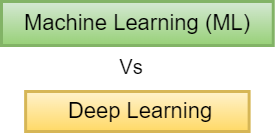Introduction
In the ever-evolving field of artificial intelligence, two terms that often come up in discussions are Machine Learning (ML) and Deep Learning. While they are closely related and share similarities, it is important to understand their differences and how they contribute to the advancement of AI. In this article, we will delve into the intricacies of ML and Deep Learning, highlighting their unique characteristics, applications, and the impact they have on various industries.
Machine Learning (ML)
Machine Learning, as the name suggests, revolves around enabling machines to learn and make predictions or decisions without explicit programming. It is a subfield of artificial intelligence that focuses on algorithms and statistical models capable of learning from data and improving performance over time.
How Does Machine Learning Work?
Machine Learning algorithms analyze vast amounts of data, identify patterns, and use them to make predictions or take actions. These algorithms can be categorized into three main types:
Supervised Learning: In this approach, the algorithm learns from labeled data, where inputs and corresponding outputs are provided. It establishes a mapping between the input and output variables, enabling it to make accurate predictions for unseen data.
Unsupervised Learning: Unlike supervised learning, unsupervised learning algorithms work with unlabeled data. They identify patterns, relationships, or clusters within the data without any predetermined output labels.
Reinforcement Learning: Using reinforcement learning, an agent is taught to interact with its environment and to pick up new skills through making mistakes. The agent can develop its decision-making skills by getting feedback in the form of incentives or penalties based on its actions.
Applications of Machine Learning
Deep Learning
How Does Deep Learning Work?
Applications of Deep Learning
Machine Learning (ML) and Deep Learning: Understanding the Differences
| Machine Learning (ML) | Deep Learning |
|---|---|
|
Machine Learning is a subset of artificial intelligence that focuses on enabling machines to learn from data and make predictions or take actions without being explicitly programmed. |
Deep Learning is a subset of Machine Learning that utilizes artificial neural networks with multiple layers to perform complex tasks. |
|
ML algorithms analyze large datasets, identify patterns, and use them to make accurate predictions or decisions. |
Deep Learning models process data through interconnected layers of artificial neurons, extracting progressively higher-level features. |
|
It involves three main types of learning:
|
Deep Learning excels in tasks such as:
|
|
Machine Learning models typically require less computational power compared to Deep Learning models. |
Deep Learning models require significant computational power and extensive training data to achieve optimal performance. |
|
ML models are easier to interpret and explain, making them suitable for applications where interpretability is crucial, such as finance and healthcare. |
Deep Learning models can automatically learn hierarchical representations from raw data, eliminating the need for manual feature extraction. |
|
Machine Learning is widely used in various domains, including:
|
Deep Learning has achieved remarkable breakthroughs in:
|

Post a Comment